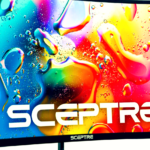The tech world is buzzing with anticipation as rumors surrounding the NVIDIA 5000 RTX series continue to circulate. Known for pushing the boundaries of graphics performance, NVIDIA is expected to take another giant leap forward with its upcoming lineup. These new GPUs are rumored to be based on the highly anticipated Blackwell architecture, which could bring significant improvements in ray tracing, DLSS technology, CUDA cores, and overall power efficiency.
In this in-depth article, we’ll explore everything we know so far about the NVIDIA 5000 RTX series, from architectural advancements and potential performance benchmarks to expected pricing and market impact. We’ll also delve into the history of NVIDIA’s GPU development, analyze the implications for gaming and content creation, and speculate on how these new GPUs will compare to competitors.
The Evolution of NVIDIA GPUs: A Brief History
To appreciate the significance of the 5000 RTX series, it’s important to understand the evolution of NVIDIA’s graphics cards over the years. Starting with the groundbreaking GeForce 256 in 1999, which introduced hardware transform and lighting (T&L) to the consumer market, NVIDIA has consistently set the standard for GPU innovation. Over the decades, we’ve seen the introduction of SLI technology, CUDA cores, ray tracing, and DLSS, all of which have redefined what’s possible in gaming and professional graphics.
From Fermi to Ampere: The Building Blocks of the 5000 RTX
The most recent architectures, Turing and Ampere, have paved the way for the expected innovations in the 5000 RTX series. Turing brought real-time ray tracing to the forefront, while Ampere improved upon this with better performance and efficiency, especially with the introduction of second-generation RT cores and third-generation Tensor cores.
The Blackwell Architecture: What It Could Mean for the 5000 RTX Series
The Blackwell architecture is rumored to be the foundation of the 5000 RTX series. Named after the mathematician David Blackwell, this architecture could represent a significant leap forward in GPU design, much like Ampere did before it.
Speculated Features of Blackwell
- Enhanced Ray Tracing: With each generation, NVIDIA has improved ray tracing performance, and Blackwell is expected to continue this trend. This could mean even more realistic lighting, shadows, and reflections in real-time applications.
- DLSS 4.0: DLSS (Deep Learning Super Sampling) has been a game-changer for rendering high-resolution images without the performance hit. The 5000 RTX series could introduce DLSS 4.0, which might offer even better image quality and performance, leveraging more advanced AI algorithms.
- Increased CUDA Cores: More CUDA cores would mean even greater parallel processing power, benefiting both gaming and compute-heavy tasks like rendering and machine learning.
- Higher Clock Speeds and Power Efficiency: The Blackwell architecture might also focus on achieving higher clock speeds while maintaining or even improving power efficiency, an area where Ampere already excels.
Performance Expectations: How Fast Will the 5000 RTX Be?
Performance is always the most eagerly awaited aspect of any new GPU release, and the 5000 RTX series is no exception. Early leaks and benchmarks, though unconfirmed, suggest that these new GPUs could outperform the current RTX 4090 by a significant margin.
Ray Tracing and Gaming Performance
With enhanced ray tracing cores and improved Tensor cores, the 5000 RTX series is expected to deliver superior ray tracing performance. This could result in smoother frame rates and better visual fidelity in 4K and even 8K gaming. Games that are heavily reliant on ray tracing, like Cyberpunk 2077 and Control, could see performance improvements of up to 50%, making these titles even more immersive.
Productivity and Content Creation
For content creators, the 5000 RTX series could offer substantial gains in rendering times, video editing, and 3D modeling. The rumored increase in CUDA cores and better AI processing capabilities could make these GPUs a must-have for professionals working in Blender, Maya, or DaVinci Resolve. Faster encoding and decoding times for video could also be on the cards, making these GPUs indispensable tools for streamers and YouTubers.
Power Efficiency: A Focus on Sustainability
In recent years, there has been a growing emphasis on power efficiency in tech, driven by both environmental concerns and the need for more efficient computing. The 5000 RTX series is expected to make strides in this area, potentially offering higher performance per watt than its predecessors.
What Does This Mean for Gamers and Enthusiasts?
For gamers, improved power efficiency could mean less heat output, leading to quieter and more compact cooling solutions. This would be a welcome change for those building small form-factor PCs or gaming in confined spaces. For enthusiasts, it could translate into more headroom for overclocking without the need for elaborate cooling setups.

Pricing and Market Impact: What to Expect
Pricing is always a crucial factor when it comes to new GPU releases. The 5000 RTX series is expected to come with a premium price tag, especially the high-end models. However, NVIDIA might also introduce more budget-friendly options, similar to how the 3060 and 3060 Ti offered Ampere performance at a more accessible price point.
How Will It Affect the Current GPU Market?
The release of the 5000 RTX series could have a significant impact on the GPU market, potentially driving down the prices of existing 4000 series cards. This could be good news for consumers who have been waiting to upgrade but were deterred by the high prices of the RTX 4090 and RTX 4080.
Competitors: How Will AMD and Intel Respond?
NVIDIA’s dominance in the GPU market has been challenged in recent years by AMD with its Radeon RX 6000 and 7000 series GPUs, and Intel with its Arc lineup. The release of the 5000 RTX series will likely intensify this competition, prompting AMD and Intel to accelerate their development timelines and possibly lower their prices to stay competitive.
Beyond Gaming: The 5000 RTX in AI and Professional Applications
While gaming is the most visible application for GPUs, the 5000 RTX series is also expected to make significant contributions to fields like AI, machine learning, and data science. The rumored advancements in Tensor cores and AI processing could make these GPUs indispensable for researchers and professionals working with deep learning and high-performance computing.
Future-Proofing: Is the 5000 RTX Series Worth the Investment?
For gamers and professionals alike, the decision to invest in a new GPU often hinges on its longevity. The 5000 RTX series, with its rumored support for PCIe 5.0 and other next-gen technologies, is expected to be future-proof, offering several years of top-tier performance before needing an upgrade.
The Role of Software and Driver Support
Another factor that adds to the value of the 5000 RTX series is NVIDIA’s robust software and driver support. With regular updates that improve performance, fix bugs, and add new features, these GPUs are likely to remain competitive for a long time.
| Specification | NVIDIA GeForce RTX 5090 |
|---|---|
| Architecture | Blackwell (Rumored) |
| CUDA Cores | 18,432 (Speculative) |
| Base Clock | 2.2 GHz (Speculative) |
| Boost Clock | 2.8 GHz (Speculative) |
| Memory | 48 GB GDDR6X |
| Memory Speed | 24 Gbps (Speculative) |
| Memory Interface | 384-bit |
| Memory Bandwidth | 1152 GB/s |
| Ray Tracing Cores | 3rd Generation RT Cores |
| Tensor Cores | 4th Generation Tensor Cores |
| DLSS | DLSS 4.0 (Rumored) |
| Power Consumption | 450W (Speculative) |
| Interface | PCIe 5.0 |
| Ports | 3x DisplayPort 2.1, 1x HDMI 2.1 |
| Cooling | Triple Fan / Liquid Cooling Option |
| Price | $1,999 (Speculative) |
| Release Date | Q1 2025 (Rumored) |
This table is purely speculative based on current trends and rumors. Actual specifications may vary upon release.
Conclusion: The Future of Gaming and Beyond with NVIDIA 5000 RTX
The NVIDIA 5000 RTX series is shaping up to be one of the most exciting GPU releases in recent memory. With its rumored innovations in performance, efficiency, and AI capabilities, these GPUs are poised to set new standards in the industry. Whether you’re a gamer looking for the best visual experience, a content creator needing powerful tools, or an AI researcher requiring cutting-edge hardware, the 5000 RTX series is worth keeping an eye on.
As we await official announcements, the anticipation continues to build. Will the 5000 RTX series live up to the hype? Only time will tell, but one thing is for sure—NVIDIA is ready to redefine what’s possible in the world of GPUs.







